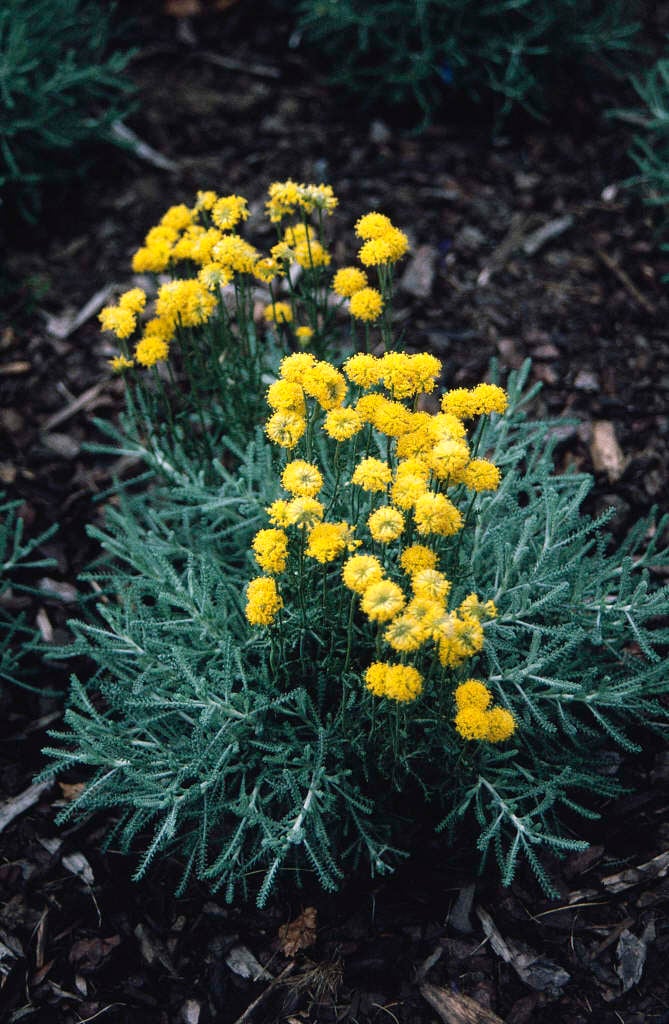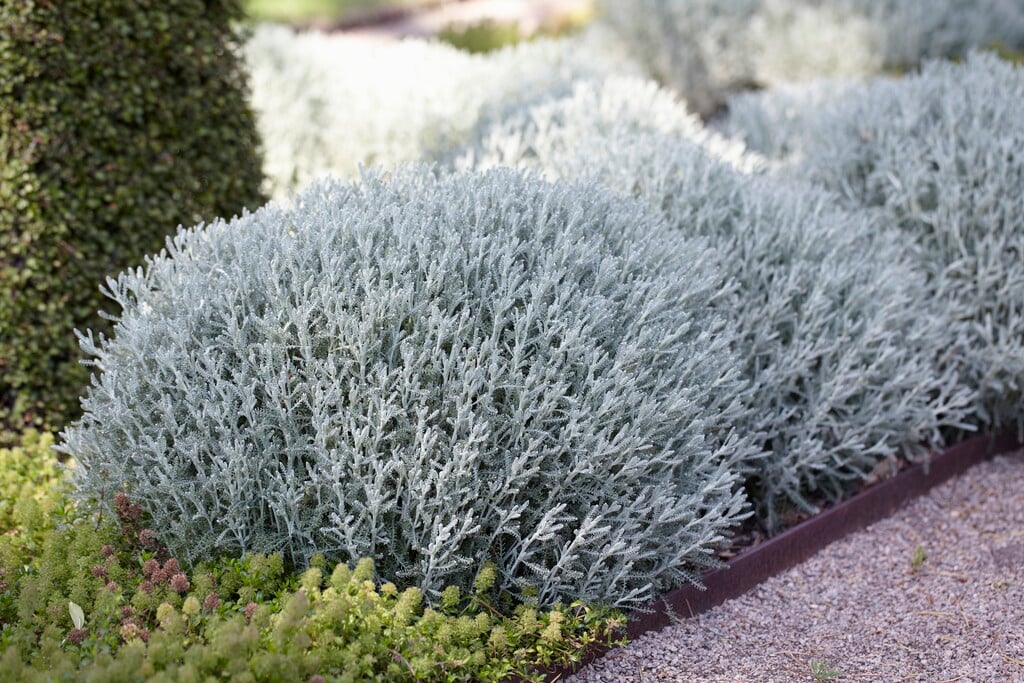Santolina chamaecyparissus
lavender cotton
A dwarf evergreen shrub with narrow, silvery-woolly, much dissected leaves and long-stalked, button-like bright yellow flowerheads 2cm in width
Synonyms
Santolina incanaChamaecyparissus africanus
Size
Ultimate height
0.1–0.5 metresTime to ultimate height
5–10 yearsUltimate spread
0.5–1 metresGrowing conditions
Moisture
Moist but well–drained, Well–drainedpH
Acid, Alkaline, NeutralColour & scent
| Stem | Flower | Foliage | Fruit | |
| Spring | Green Grey Silver | |||
|---|---|---|---|---|
| Summer | Yellow | Green Grey Silver | ||
| Autumn | Green Grey Silver | |||
| Winter | Green Grey Silver |
Position
- Full sun
Aspect
South–facing or East–facing
Exposure
ShelteredDrought resistance
Yes Hardiness
H5Botanical details
- Family
- Asteraceae
- Native to GB / Ireland
- No
- Foliage
- Evergreen
- Habit
- Bushy
- Genus
Santolina are aromatic, dwarf evergreen shrubs with entire or pinnately dissected leaves and dense, button-like flower-heads in summer
- Name status
Correct
- Plant range
- Mediterranean
How to grow
Cultivation
Easy to grow evergreen sub-shrub that thrives in hot, sunny, well-drained sites. Useful as a dwarf-hedging substitute although they can be short-lived. Trim back after flowering to maintain a dense, compact shrub
Propagation
Propagate by seed or semi-hardwood cuttings
Suggested planting locations and garden types
- Gravel garden
- Coastal
- Cottage and informal garden
- Patio and container plants
- Mediterranean climate plants
- Low Maintenance
- Hedging and screens
- Flower borders and beds
- Wall side borders
Pruning
Pests
Generally pest-free
Diseases
May be susceptible to honey fungus in gardens where it is present but insufficient data to determine degree of susceptibility
Love gardening
Sign up to receive regular gardening tips, inspiration, offers and more
View our Privacy Policy
Get involved
The Royal Horticultural Society is the UK’s leading gardening charity. We aim to enrich everyone’s life through plants, and make the UK a greener and more beautiful place.

